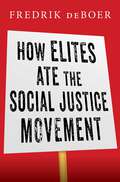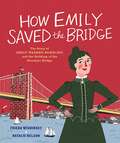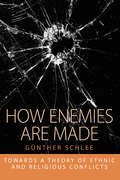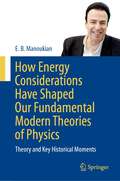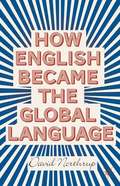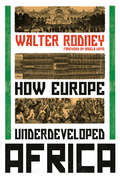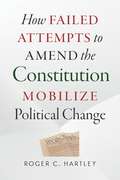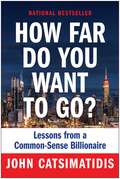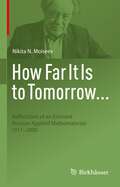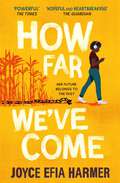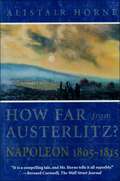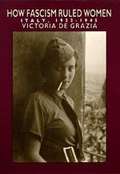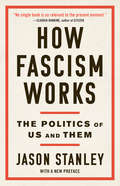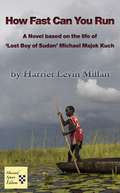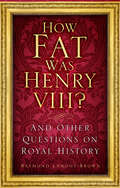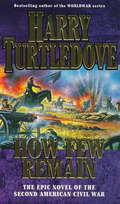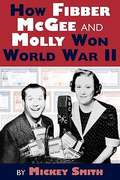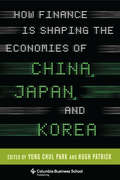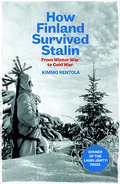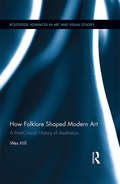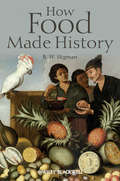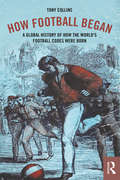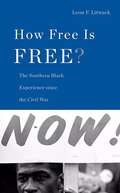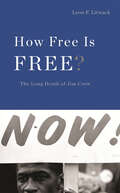- Table View
- List View
How Elites Ate the Social Justice Movement
by Fredrik deBoerAn eye-opening exploration of American policy reform, or lack thereof, in the wake of the murder of George Floyd and the Black Lives Matter movement and how the country can do better in the future from Fredrik deBoer, &“one of the sharpest and funniest writers on the internet&” (The New York Times).In 2020, while the Covid-19 pandemic raged, the United States was hit by a ripple of political discontent the likes of which had not been seen since the 1960s. The spark was the viral video of the horrific police murder of an unarmed Black man in Minneapolis. The killings of George Floyd galvanized a nation already reeling from Covid and a toxic political cycle. Tens of thousands poured into the streets to protest. Major corporations and large nonprofit groups—institutions that are usually resolutely apolitical—raced to join in. The fervor for racial justice intersected with the already simmering demands for change from the #MeToo movement and for economic justice from Gen Z. The entire country suddenly seemed to be roaring for change in one voice. Then nothing much happened. In How Elites Ate the Social Justice Movement, Fredrik deBoer explores why these passionate movements failed and how they could succeed in the future. In the digital age, social movements flare up but then lose steam through a lack of tangible goals, the inherent moderating effects of our established institutions and political parties, and the lack of any real grassroots movement in contemporary America. Hidden beneath the rhetoric of the oppressed and symbolism of the downtrodden lies and the inconvenient fact that those are doing the organizing, messaging, protesting, and campaigning are predominantly drawn from this country&’s more upwardly mobile educated classes. Poses are more important than policies. deBoer lays out an alternative vision for how society&’s winners can contribute to social justice movements without taking them over, and how activists and their organizations can become more resistant to the influence of elites, nonprofits, corporations, and political parties. Only by organizing around class rather than empty gestures can we begin the hard work of changing minds and driving policy.
How Emily Saved the Bridge: The Story of Emily Warren Roebling and the Building of the Brooklyn Bridge
by Frieda WishinskyThe amazing story of Emily Warren Roebling, the woman who stepped in to oversee the construction of the Brooklyn Bridge, which was completed in 1883.Emily was not an engineer, but she was educated in math and science. She married Washington Roebling, the chief engineer of the famous bridge. When Washington became ill from decompression sickness, Emily stepped in, doing everything from keeping the books, to carrying messages for her husband, to monitoring the construction of the bridge. She was the first person to cross the Brooklyn Bridge when it opened.Emily, who went on to study law among many other accomplishments, is an inspiration to all, as demonstrated through Frieda Wishinsky’s informative and engaging text and Natalie Nelson’s distinctive collage illustrations. Speech bubbles revealing imagined dialogue add a playful note to this historical account, which includes fascinating facts about the Brooklyn Bridge and a further reading list.Key Text Featuresfurther readingspeech bubblesCorrelates to the Common Core State Standards in English Language Arts:CCSS.ELA-LITERACY.RL.2.1Ask and answer such questions as who, what, where, when, why, and how to demonstrate understanding of key details in a text.CCSS.ELA-LITERACY.RL.4.3Describe in depth a character, setting, or event in a story or drama, drawing on specific details in the text (e.g., a character's thoughts, words, or actions).
How Enemies Are Made
by Günther SchleeIn popular perception cultural differences or ethnic affiliation are factors that cause conflict or political fragmentation although this is not borne out by historical evidence. This book puts forward an alternative conflict theory. The author develops a decision theory which explains the conditions under which differing types of identification are preferred. Group identification is linked to competition for resources like water, territory, oil, political charges, or other advantages. Rivalry for resources can cause conflicts but it does not explain who takes whose side in a conflict situation. This book explores possibilities of reducing violent conflicts and ends with a case study, based on personal experience of the author, of conflict resolution.
How Energy Considerations Have Shaped Our Fundamental Modern Theories of Physics: Theory and Key Historical Moments
by E. B. ManoukianAt long last, with sufficient technical details, emphasizing key historical moments, a book that develops all of fundamental modern theoretical physics from energy considerations in a compact form. Starting with a few electron-volts of atoms in the quantum world at low energies extending up to quantum gravity and beyond to the birth of the Universe, readers will experience the entire spectrum of fundamental modern theoretical physics, with one theory leading to another in an integrated unified manner. Energy considerations lead to the development of special and general relativity, quantum field theory, renormalization theory, modern quantum electrodynamics, electro-weak theory, the standard model of particle physics, grand unified theories, string theory, the current standard model of inflationary big bang theory, and even to the birth of the Higgs field, and in developments of quantum gravity. Unfortunately, due to strong specialization within theirfields, students and many practicing physicists are exposed only to parts of the beautiful story of modern fundamental physics. Here the entire story is told! This is a must-read book for graduate students, advanced undergraduate students, instructors and professionals who are interested in all aspects of fundamental modern theoretical physics and key historical moments in its development.
How English Became The Global Language
by David NorthrupIn this book, the first written about the globalization of the English language by a professional historian, the exploration of English's global ascendancy receives its proper historical due. This brief, accessible volume breaks new ground in its organization, emphasis on causation, and conclusions.
How Europe Underdeveloped Africa
by Angela Davis Walter RodneyThe classic work of political, economic, and historical analysis, powerfully introduced by Angela DavisIn his short life, the Guyanese intellectual Walter Rodney emerged as one of the leading thinkers and activists of the anticolonial revolution, leading movements in North America, South America, the African continent, and the Caribbean. In each locale, Rodney found himself a lightning rod for working class Black Power. His deportation catalyzed 20th century Jamaica's most significant rebellion, the 1968 Rodney riots, and his scholarship trained a generation how to think politics at an international scale. In 1980, shortly after founding of the Working People's Alliance in Guyana, the 38-year-old Rodney would be assassinated.In his magnum opus, How Europe Underdeveloped Africa, Rodney incisively argues that grasping "the great divergence" between the west and the rest can only be explained as the exploitation of the latter by the former. This meticulously researched analysis of the abiding repercussions of European colonialism on the continent of Africa has not only informed decades of scholarship and activism, it remains an indispensable study for grasping global inequality today.
How Failed Attempts to Amend the Constitution Mobilize Political Change
by Roger C. HartleySince the Constitution's ratification, members of Congress, following Article V, have proposed approximately twelve thousand amendments, and states have filed several hundred petitions with Congress for the convening of a constitutional convention. Only twenty-seven amendments have been approved in 225 years. Why do members of Congress continue to introduce amendments at a pace of almost two hundred a year?This book is a demonstration of how social reformers and politicians have used the amendment process to achieve favorable political results even as their proposed amendments have failed to be adopted. For example, the ERA "failed" in the sense that it was never ratified, but the mobilization to ratify the ERA helped build the feminist movement (and also sparked a countermobilization). Similarly, the Supreme Court's ban on compulsory school prayer led to a barrage of proposed amendments to reverse the Court. They failed to achieve the requisite two-thirds support from Congress, but nevertheless had an impact on the political landscape. The definition of the relationship between Congress and the President in the conduct of foreign policy can also be traced directly to failed efforts to amend the Constitution during the Cold War.Roger Hartley examines familiar examples like the ERA, balanced budget amendment proposals, and pro-life attempts to overturn Roe v. Wade, but also takes the reader on a three-century tour of lesser-known amendments. He explains how often the mere threat of calling a constitutional convention (at which anything could happen) effected political change.
How Failed Attempts to Amend the Constitution Mobilize Political Change
by Roger C. HartleySince the Constitution's ratification, members of Congress, following Article V, have proposed approximately twelve thousand amendments, and states have filed several hundred petitions with Congress for the convening of a constitutional convention. Only twenty-seven amendments have been approved in 225 years. Why do members of Congress continue to introduce amendments at a pace of almost two hundred a year? This book is a demonstration of how social reformers and politicians have used the amendment process to achieve favorable political results even as their proposed amendments have failed to be adopted. For example, the ERA "failed" in the sense that it was never ratified, but the mobilization to ratify the ERA helped build the feminist movement (and also sparked a countermobilization). Similarly, the Supreme Court's ban on compulsory school prayer led to a barrage of proposed amendments to reverse the Court. They failed to achieve the requisite two-thirds support from Congress, but nevertheless had an impact on the political landscape. The definition of the relationship between Congress and the President in the conduct of foreign policy can also be traced directly to failed efforts to amend the Constitution during the Cold War. Roger Hartley examines familiar examples like the ERA, balanced budget amendment proposals, and pro-life attempts to overturn Roe v. Wade, but also takes the reader on a three-century tour of lesser-known amendments. He explains how often the mere threat of calling a constitutional convention (at which anything could happen) effected political change.
How Far Do You Want to Go?: Lessons from a Common-Sense Billionaire
by John CatsimatidisWall Street Journal Bestseller Publishers Weekly Bestseller Billionaire entrepreneur John Catsimatidis, owner and CEO of the Red Apple Group, reveals how his instincts and common sense have propelled him to massive business success in this detailed account of an incredible rags-to-riches story. Born on the small Greek island of Nisyros, John Catsimatidis immigrated to the States with his family and quickly became a true New Yorker, raised in Harlem. He went to school by day and worked in a small grocery store by night to help his parents pay the bills until, just eight credits short of graduating from New York University, he opted to work in the grocery business full-time. Today, that grocery business has become the Red Apple Group, a conglomerate with interests in energy, real estate, aviation, baseball, entertainment, and media, including the iconic radio station WABC, where John hosts leading figures in government, politics, business, and economics. As Catsimatidis has discovered, the American Dream doesn&’t come with an instruction manual—or even a sign to let you know when you&’ve arrived at the finish line. How Far Do You Want to Go? tells Catsimatidis&’s dynamic story, from his beginnings in the grocery business to entering the political arena, including a New York City mayoral campaign. He&’s tried his hand at nearly everything, but he&’s far from finished with his adventures. Now, he offers readers a glimpse into the wisdom he&’s gained—and the excitement he has for what the future holds in store.
How Far It Is to Tomorrow...: Reflections of an Eminent Russian Applied Mathematician 1917-2000
by Nikita N. MoiseevThis is a translated autobiography of applied mathematician N. N. Moiseev, providing an insider’s view of the history of the Soviet Union from its founding in 1917 to its collapse in 1991, as well as a little of the aftermath.We see vividly the precariousness of life just after the October Revolution; his happy family life during the years 1921-28 of Lenin’s New Economic Policy; the subsequent destruction of his family by Stalin’s regime; his trials as a social outcast; his student days at Moscow State University; his experiences as a Soviet Air Force Engineer in World War II, including sorties as a gunner and a brush with an NKVD agent; post-war euphoria, marriage, and another round of ostracism; and then the vicissitudes of a highly varied academic career. Here we meet many famous Soviet and Western engineers and scientists. The last several chapters are devoted more to wide-ranging reflections on God, philosophy, science, communism, modelling the biosphere, and the threat of nuclear winter. His thoughts concerning the impending and then final collapse of the USSR, as well as hopes for Russia’s future, conclude the journey through Moiseev's life.
How Far We've Come
by Joyce Efia HarmerFrom debut author, Joyce Efia Harmer, comes a groundbreaking YA story of friendship and freedom that crosses continents and centuries, in a timeslip novel exploring the legacy of slavery. 'A powerful debut' The TimesSometime, me love to dream that me is a human, a proper one, like them white folks is. Enslaved on a plantation in Barbados, Obah dreams of freedom. As talk of rebellion bubbles up around her in the Big House, she imagines escape. Meeting a strange boy who&’s not quite of this world, she decides to put her trust in him. But Jacob is from the twenty-first century. Desperate to give Obah a better life, he takes her back with him. At first it seems like dreams really do come true – until the cracks begin to show and Obah sees that freedom comes at an unimaginable cost . . . Both hopeful and devastating, this powerful novel about equality, how far we&’ve come, and how far we still have to go introduces an extraordinary new literary voice.
How Far from Austerlitz?: Napoleon 1805–1815
by Alistair HorneA London Sunday Times Book of the YearA Daily Telegraph Book of the YearAlistair Horne explores the theme of military success and failure in How Far From Austerlitz? chronicling Napoleon's rise and fall, drawing parallels with other great leaders of the modern era. The Battle of Austerlitz was Napoleon's greatest victory, the culmination of one of the greatest military campaigns of all time. It was also the last battle the "Father of Modern Warfare" would leave in absolute triumph, for, though he did not know it, Austerlitz marked the beginning of Napoleon's downfall. His triumph was too complete and his conquest too brutal to last. Like Hitler, he came to believe he was invincible, that no force could halt his bloody march across Europe. Like Hitler, he paid dearly for his hubris, climaxing in bitter defeat at Waterloo in 1815. In a matter of years, he had fallen from grace.
How Fascism Ruled Women: Italy, 1922-1945
by Victoria De Grazia"Italy has been made; now we need to make the Italians, " is a long-familiar Italian saying. Mussolini was the first head of government to include women in this mandate. What the fascist dictatorship expected of its female subjects and how they experienced the Duce's brutal but seductive rule are the main topics of Victoria de Grazia's new book. The author draws on an unusual array of sources--memoirs, novels, and reports on the images and events of mass culture, as well as government statistics and archival accounts--to present a broad yet detailed characterization of Italian women's ambiguous and ambivalent experience of a regime that promised women modernity, yet denied them freedom. Always attentive to the great diversity among women and careful to distinguish fascist rhetoric from the practices actually shaping daily existence, de Grazia moves with ease from the public discourse about maternity and family life to the images of femininity in commercial culture. The first study of women's experience under Italian fascism, this book offers a compelling treatment of the making of contemporary Italian society. With acute comparisons between the sexual politics of Italian fascism and developments elsewhere, including Hitler's Germany, de Grazia illuminates trends and dilemmas common to the construction of female citizenship in twentieth-century societies.
How Fascism Works: The Politics of Us and Them
by Jason Stanley“Reveals how the liberties of the people wither when voters embrace politicians who promote the divisive politics of us versus them.”—David Cay Johnston, author of The Making of Donald Trump and It’s Even Worse Than You Think“This is an important and essential book.”—Errol Morris, filmmaker and author of The AshtrayFascist politics are running rampant in America today—and spreading around the world. A Yale philosopher identifies the ten pillars of fascist politics, and charts their horrifying rise and deep history. As the child of refugees of World War II Europe and a renowned philosopher and scholar of propaganda, Jason Stanley has a deep understanding of how democratic societies can be vulnerable to fascism: Nations don’t have to be fascist to suffer from fascist politics. In fact, fascism’s roots have been present in the United States for more than a century. Alarmed by the pervasive rise of fascist tactics both at home and around the globe, Stanley focuses here on the structures that unite them, laying out and analyzing the ten pillars of fascist politics—the language and beliefs that separate people into an “us” and a “them.” He knits together reflections on history, philosophy, sociology, and critical race theory with stories from contemporary Hungary, Poland, India, Myanmar, and the United States, among other nations. He makes clear the immense danger of underestimating the cumulative power of these tactics, which include exploiting a mythic version of a nation’s past; propaganda that twists the language of democratic ideals against themselves; anti-intellectualism directed against universities and experts; law and order politics predicated on the assumption that members of minority groups are criminals; and fierce attacks on labor groups and welfare. These mechanisms all build on one another, creating and reinforcing divisions and shaping a society vulnerable to the appeals of authoritarian leadership. By uncovering disturbing patterns that are as prevalent today as ever, Stanley reveals that the stuff of politics—charged by rhetoric and myth—can quickly become policy and reality. Only by recognizing fascists politics, he argues, may we resist its most harmful effects and return to democratic ideals.“With unsettling insight and disturbing clarity, How Fascism Works is an essential guidebook to our current national dilemma of democracy vs. authoritarianism.”—William Jelani Cobb, author of The Substance of Hope
How Fast Can You Run: A Novel Based on the Life of 'Lost Boy of Sudan' Michael Majok Kuch
by Harriet Levin MillanA Novel based on the true story of Lost Boy of Sudan Michael Majok Kuch. Five-year-old Majok fled his village when the government in the North of Sudan ordered attacks against the South. Along with thousands of other refugees, Majok trekked through war zones and wilderness to a series of refugee camps where he would live for the next ten years. Michael Majok Kuch attended high school, college and graduate school in Philadelphia. He was a featured Lost Boy of Sudan in the PBS documentary, Dinka Diaries.
How Fat Was Henry VIII?: And 100 Other Questions on Royal History
by Raymond Lamont-BrownEver wondered how fat Henry VIII really was? Or what made Mary I ‘Bloody’?Over many hundreds of years, British royalty has had its fair share of accidents, rumours, scandals, misrepresentations and misconceptions. For instance, could Richard III be innocent of the deaths of the ‘Princes in the Tower’? And what really happened between Queen Victoria and her Highland servant John Brown?In today’s world, where newspapers clamour to report new revelations about the Royal Family, this informative and quirky book gives the inquisitive reader an in-depth look at the secrets of our past royals. For anyone curious about what went on behind the palace walls, Raymond Lamont-Brown answers those intriguing, confusing and mysterious questions we might have about our monarchs.
How Few Remain
by Harry TurtledoveA generation after the South won the first American civil War, America writhes once more in the bloody throes of battle. Furious over the annexation of key Mexican territory, the United States declares total war against the Confederate States. And so, in 1881, the fragile peace is shattered.But this is a new kind of war, fought on a lawless frontier where the Blue and the Grey battle not only each other but the Apache, the outlaw - and even the British Redcoat. For along with France, Britain enters the fray on the Confederate side. 'The wizard of If.' Chicago Sun-Times'The standard-bearer for alternate history.' USA Today
How Fibber Mcgee and Molly Won World War II
by Mickey C. SmithA detailed account with notes about the Fibber McGee and Molly show and its relationship to the Johnson wax company during World War II.
How Finance Is Shaping the Economies of China, Japan, and Korea (Columbia Business School Publishing)
by Hugh Patrick Meissner Larry Yung Chul ParkThis volume connects the evolving modern financial systems of China, Japan, and Korea to the development and growth of their economies through the first decade of the twenty-first century. It also identifies the commonalities among all three systems while accounting for their social, political, and institutional differences.Essays consider the reforms of the Chinese economy since 1978, the underwhelming performance of the Japanese economy since about 1990, and the growth of the Korean economy over the past three decades. These economies engaged in rapid catch-up growth processes and share similar economic structures. Yet while domestic forces have driven each country's financial trajectory, international short-term financial flows have presented opportunities and challenges for them all. The nature and role of the financial system in generating real economic growth, though nuanced and complex, is integral to these countries. The result is a fascinating spectrum of experiences with powerful takeaways.
How Finland Survived Stalin: From Winter War to Cold War, 1939-1950
by Kimmo RentolaA dramatic and timely account of Stalin&’s failed invasion of Finland in 1939, and the decade of wars and fraught relations that followed In November 1939, Stalin directed his military leaders to launch an invasion of Finland. In what became known as the Winter War, the full might of the Soviet army was pitted against this small Nordic republic. Yet despite their vastly superior military strength, the Soviets suffered heavy losses and failed to mount Stalin&’s intended full-scale invasion. How did Finland evade Stalin&’s crosshairs—not once, but three times more? In this groundbreaking account, Kimmo Rentola traces the epochal shifts in Soviet-Finnish relations. From the Winter War to Finland&’s exit from World War II in 1944, a possible Soviet-backed coup in 1948, and Moscow&’s designation of Finland as an enemy state in 1950, Finland was forced to navigate Stalin&’s outsize political and territorial demands. Rentola presents a dramatic reconstruction of Finland&’s unlikely survival at a time when the nation&’s very existence was at stake.
How Folklore Shaped Modern Art: A Post-Critical History of Aesthetics (Routledge Advances in Art and Visual Studies #15)
by Wes HillSince the 1990s, artists and art writers around the world have increasingly undermined the essentialism associated with notions of "critical practice." We can see this manifesting in the renewed relevance of what were previously considered "outsider" art practices, the emphasis on first-person accounts of identity over critical theory, and the proliferation of exhibitions that refuse to distinguish between art and the productions of culture more generally. How Folklore Shaped Modern Art: A Post-Critical History of Aesthetics underscores how the cultural traditions, belief systems and performed exchanges that were once integral to the folklore discipline are now central to contemporary art’s "post-critical turn." This shift is considered here as less a direct confrontation of critical procedures than a symptom of art’s inclusive ideals, overturning the historical separation of fine art from those "uncritical" forms located in material and commercial culture. In a global context, aesthetics is now just one of numerous traditions informing our encounters with visual culture today, symptomatic of the pull towards an impossibly pluralistic image of art that reflects the irreducible conditions of identity.
How Food Made History
by B. W. HigmanCovering 5,000 years of global history, How Food Made History traces the changing patterns of food production and consumption that have molded economic and social life and contributed fundamentally to the development of government and complex societies. Charts the changing technologies that have increased crop yields, enabled the industrial processing and preservation of food, and made transportation possible over great distances Considers social attitudes towards food, religious prohibitions, health and nutrition, and the politics of distribution Offers a fresh understanding of world history through the discussion of food
How Football Began: A Global History of How the World's Football Codes Were Born
by Tony CollinsThis ambitious and fascinating history considers why, in the space of sixty years between 1850 and 1910, football grew from a marginal and unorganised activity to become the dominant winter entertainment for millions of people around the world. The book explores how the world’s football codes - soccer, rugby league, rugby union, American, Australian, Canadian and Gaelic - developed as part of the commercialised leisure industry in the nineteenth century. Football, however and wherever it was played, was a product of the second industrial revolution, the rise of the mass media, and the spirit of the age of the masses. Important reading for students of sports studies, history, sociology, development and management, this book is also a valuable resource for scholars and academics involved in the study of football in all its forms, as well as an engrossing read for anyone interested in the early history of football.
How Free Is Free? The Long Death of Jim Crow
by Leon F. LitwackIn 1985, a black veteran of the civil rights movement offered a bleak vision of a long and troubled struggle. For more than a century, black southerners learned to live with betrayed expectations, diminishing prospects, and devastated aspirations. Their odyssey includes some of the most appalling examples of terrorism, violence, and dehumanization in the history of this nation. But, as Leon Litwack graphically demonstrates, it is at the same time an odyssey of resilience and resistance defined by day-to-day acts of protest: the fight for justice poignantly recorded in the stories, songs, images, and movements of a people trying to be heard. For black men and women, the question is: how free is free? Despite two major efforts to reconstruct race relations, injustices remain. From the height of Jim Crow to the early twenty-first century, struggles over racism persist despite court decisions and legislation. Few indignities were more pronounced than the World War II denial of basic rights and privileges to those responding to the call to make the world safe for democratic values that they themselves did not enjoy. And even the civil rights movement promise to redeem America was frustrated by change that was often more symbolic than real. Although a painful history to confront, Litwack's book inspires as it probes the enduring story of racial inequality and the ongoing fight for freedom in black America with power and grace.
How Free Is Free?: The Long Death of Jim Crow (The Nathan I. Huggins lectures)
by Leon F. LitwackIn 1985, a black veteran of the civil rights movement offered a bleak vision of a long and troubled struggle. For more than a century, black southerners learned to live with betrayed expectations, diminishing prospects, and devastated aspirations. Their odyssey includes some of the most appalling examples of terrorism, violence, and dehumanization in the history of this nation. But, as Leon Litwack graphically demonstrates, it is at the same time an odyssey of resilience and resistance defined by day-to-day acts of protest: the fight for justice poignantly recorded in the stories, songs, images, and movements of a people trying to be heard.For black men and women, the question is: how free is free? Despite two major efforts to reconstruct race relations, injustices remain. From the height of Jim Crow to the early twenty-first century, struggles over racism persist despite court decisions and legislation. Few indignities were more pronounced than the World War II denial of basic rights and privileges to those responding to the call to make the world safe for democratic values—values that they themselves did not enjoy. And even the civil rights movement promise to redeem America was frustrated by change that was often more symbolic than real.Although a painful history to confront, Litwack’s book inspires as it probes the enduring story of racial inequality and the ongoing fight for freedom in black America with power and grace.
